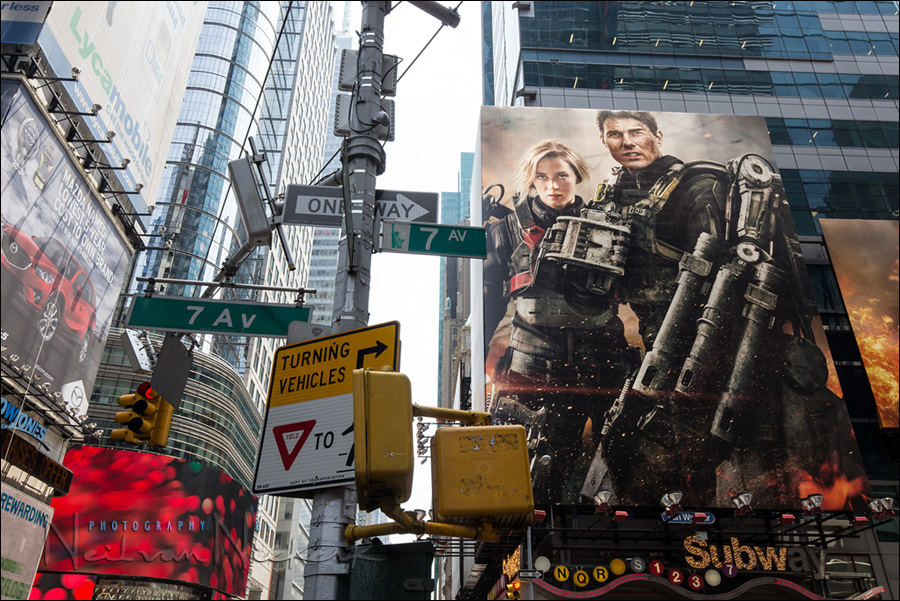
review: Canon EF 16-35mm f/4L IS
With this wide-angle zoom, I felt like Canon redeemed itself. And you may well wonder why I have such a strong opinion about this. Well, my experience with Canon over the years has been a clouded one. A number of years back I moved back to Nikon again when I couldn’t handle the Canon 24-70mm f2.8L going out of calibration every so often. Then, there was the untrustworthy AF performance of the Canon 1D mark III. In fact, I’m still waiting for Canon to send me an apology note for that camera. In fact, for all three bodies that I owned.
But I digress … we’re talking about Canon wide-angle zooms. The final straw for me with regards to Canon, was when I had worked through five copies of the Canon 16-35mm f/2.8 II and all five copies had issues and were soft to the edges. It’s all detailed in this post: Canon and Nikon. Then, I finally got to use the Nikon 14-24mm f/2.8G (affiliate), and my struggles with soft Canon wide-angle zooms were over. I finally had a wide-angle lens that was razor sharp to the edges. And a zoom, to boot!
So with that, I was done. I had given up on Canon ever producing a wide-angle zoom that could perform. Sharp to the edges. No optical smearing. Just do what it is supposed to do – be a wide-angle zoom lens. Something the Nikon 14-24 f/2.8G excelled at. And that is something the Canon 17-40mm f/4L and the Canon 16-35mm f/2.L II didn’t quite do as well.
Then the Canon EF 16-35mm f/4L IS (B&H / Amazon) arrived, and I was curious. Could this finally be? And yes, Canon has redeemed itself. Finally, here is a Canon wide-angle zoom that is an excellent performer. You know, worthy of that red stripe.
Specifications and features
- The Canon EF 16-35mm f/4L IS (affiliate) features a constant f/4 maximum aperture for consistent performance throughout the zoom range. My test images would suggest that it is closer to an f/4.5 optic though.
- Two UD elements and three aspherical elements, including one large-diameter aspherical element, have been incorporated into the optical design to minimize aberrations and distortion throughout the zoom range.
- A fluorine coating has been applied to the front and rear lens surfaces to reduce ghosting for maintained image contrast and color fidelity.
- Camera shake has been reduced by up to four stops with the built-in Optical Image Stabilizer, which is especially handy in low light.
- Full-time manual focus permits critical focusing precision, even in AF mode.
- With a 77mm filter, this lens is purported to be highly dust- and water-resistant. (Not something I could purposely test though.)
- A nine-bladed diaphragm helps to render great out-of-focus backgrounds (i.e. excellent bokeh).
Optical performance of the Canon EF 16-35mm f/4L IS
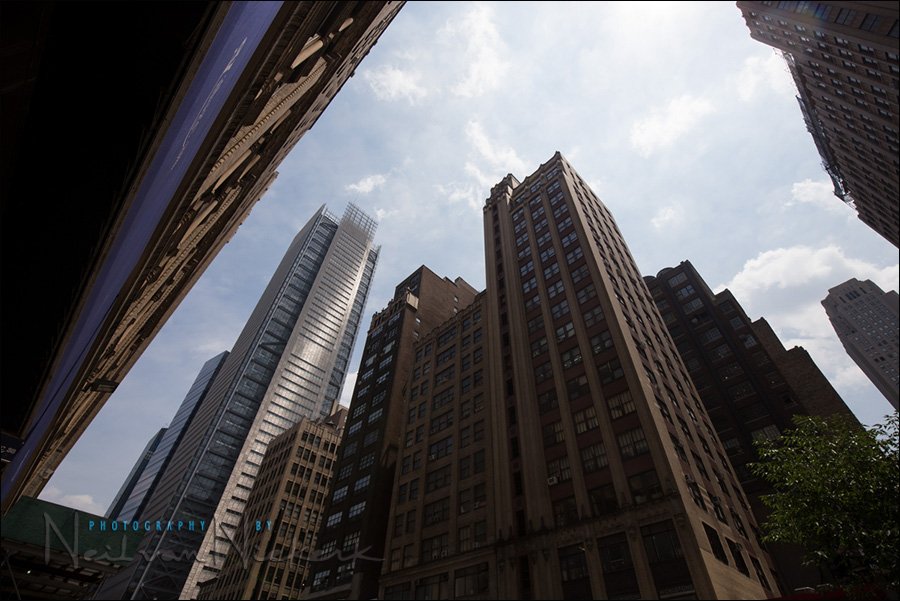
In photographing various cityscapes in New York, I was impressed with the image quality. There was some barrel distortion at the widest zoom setting, but nothing disturbing.
There was mild image softness to the left-hand side of the frame at f/4 when tested with my Canon 6D (affiliate).
I’ve added three sets of RAW files, shot at f/4 and f/5.6 (and some at f/8) and at various zoom settings (16 / 24 / 35mm), and these can be downloaded from this link – raw files – so that you can look at the files yourself. I think you’ll be impressed as well.
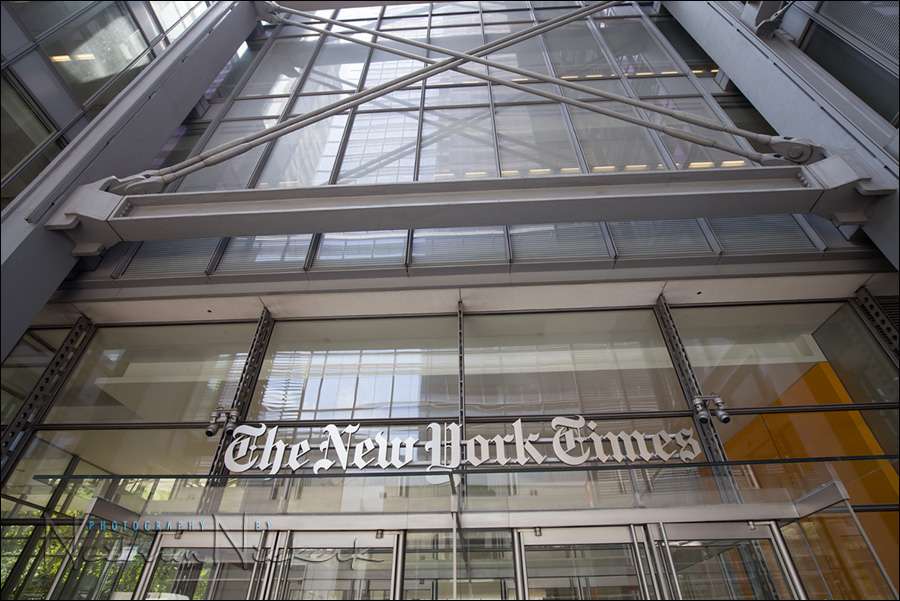
The next few frames were shot on a photographic outing arranged by Unique Photo, NJ’s largest photo retailer. Check out their program – they regularly arrange photo excursions and classes.
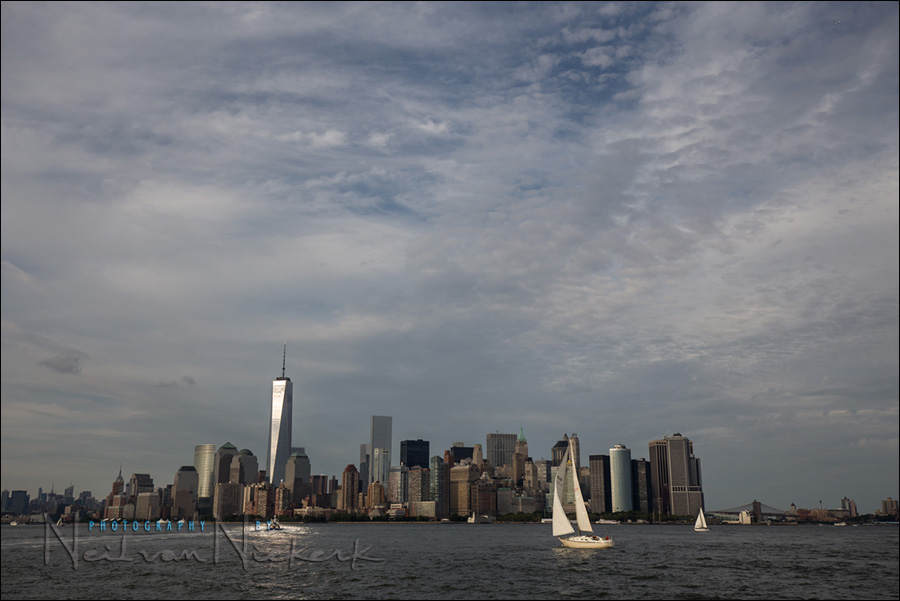
I just love this photo – sun reflecting off the Freedom Tower, and a police motorboat moving directly into the reflected light on the Hudson River. All neatly balanced by the sailboat on the other side of the frame.
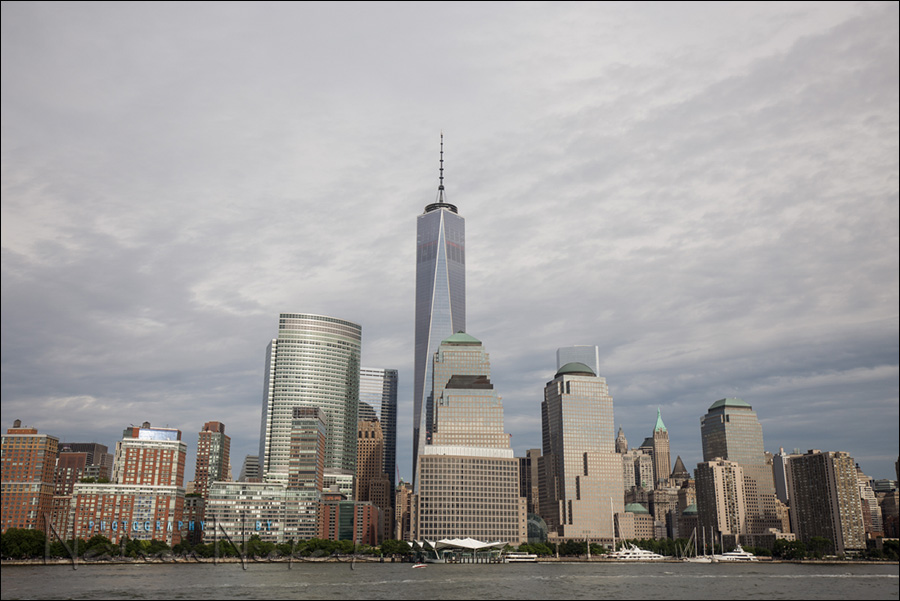
While I didn’t get to test the 16-35mm lens’ stabilization in low light, it did make me more confident that any swaying of the boat would be minimized.

Summary
I love my Canon 24-70mm f/2.8L II (affiliate), which is razor-sharp and a superb update to the problematic previous version of that lens. Similarly, the Canon EF 70-200mm f/2.8L IS II (affiliate) makes me happier than the first version of that lens could. (I was never satisfied by the wide-open sharpness of the mark 1 version.)
But there had been a gap for me in my lens line-up. I didn’t have a Canon wide-angle zoom lens. Now I do, and Canon EF 16-35mm f/4L IS (B&H / Amazon) is one I can confidently use.
Some of you may well wonder why I have a complement of Canon lenses if I shoot with Nikon. With the Photography Workshops that I present; and with the Tangents blog; and having to answer questions about Canon, it is imperative that I remain au fait with this system as well.
Reviews of other Canon gear
- Other Canon photo gear that I’ve reviewed.
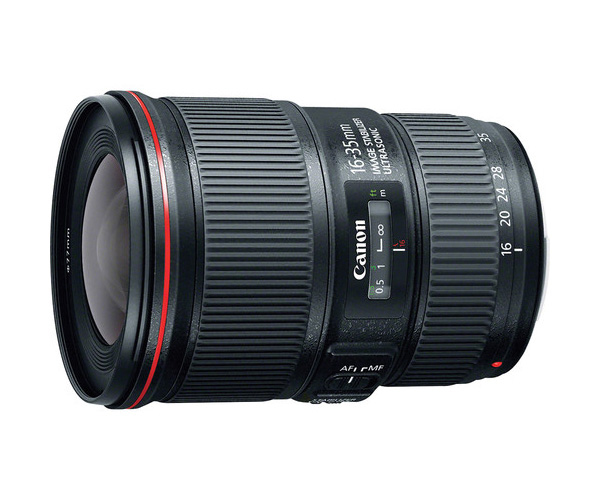
Thanks for the excellent review. While I have a crop body 7D this lens still sounds interesting as an addition to my two ‘L’ lenses.
They are both version I – 24-70 2.8 and the 70-200 f4 IS. I think as a hobbyist moving to version II lenses is maybe not in the cards.
Always enjoy your tangent blogs on flash work!!
Nice review Neil,
You’ve got me thinking about upgrading from my 16-35mm f/2.L II. You don’t consider the loss of a stop to be a significant one?
Usually these lenses are used for outdoor landscape shots so you will be using it at f8 to f16 so you dont need to worry about f2.8. If you want to use the wide angle for dramatic angle night time shots then yes the loss of a stop may hurt but then there is always a bump to your ISO to fix that with modern cameras up to 3200 ISO is still good.
I would still check out the 16-35mm f/2.8 and just compare image sharpness, but I do think you will be impressed that the f/4 IS lens is optically better.
For me, the loss of a stop on a ultra-wide lens, is a big problem. You don’t need that kind of separation that shallow depth-of-field would give you on a 70-200mm f/2.8 lens, for example. With an ultra-wide lens, the DoF appears much more anyway. Then, this lens has stabilization, which in part overcomes any loss in shutter speed.
isn´t a big problem, right?
It depends on your use of the lens. The f/4 might be too slow for movement in low light. The stabilization doesn’t help for that.
I think he meant, in your previous comment, did you mean to say “isn’t a big problem” rather than “is a big problem”
Indeed. I’m sure it’s a nice lens, but not on my list as it’s not fast enough for low light use.
Neil: Thanks for the straight up posting on this lens. I have followed you over the years at DWF and recall so well your pain with Canon. You certainly did all you could to find a solution. We are no longer wedding or portrait shooters having gone the volume route. I see this lens as a great landscape lens and replacement for my Canon 16-24 2.8L sitting collecting dust.
Glad to hear you have finally found a couple Canon lenses that meet your need. And thanks for your commitment to excellent in your willingness to invest in Canon gear to better meet the needs of your students. It says a lot.
Ray
Neil: How does it compare to the Nikon version?
Ricardo
Canon DOES have some reliability issues with certain components. In particular, there is a problem with the Canon 24-70 2.8 I which is well documented in the following link:
https://www.lensrentals.com/blog/2011/10/the-limits-of-variation/
I have the Canon 24-70 2.8 II and took it out to an event for the first time without testing it…ugh! I shouldnt have done that and guess what? All of the shots I took were blurry. I had to send the lens back for re-calibration. I got a bad copy. I saw in a few notable reviews of this same lens where photographers were sending theirs back for another copy too. Luckily, I had my Sigma 24-105mm which was a great backup. Just turned up the flash a little bit…
When I was using the Canon Speedlights, I would send the 580EX IIs to the repair depot at least twice in 1 year which is the reason why I switched the Metz 76 and Quantum flashes.
As for the 16-35, I find myself just using the 16mm focal length. I dont ever use it for 24-35mm. I have other lenses which do a better job at the 24-35mm end. Would I need 2.8 aperture when using the lens at 16mm? I dont find myself needing the lower aperture at 16mm. My use of this lens is for landscape type photos primarily.
The main reason why I just “had to get” the 16-35mm was my experience at the Vatican. When you go to Italy, its impossible to use a tripod. Most areas of Italy prohibit or frown upon the use of a tripod so you are left to handholding and resting the body on whatever you can find. Wide angle is really really needed when you take photos of the interior St Peters for instance. I had the 17-40 when I went and found myself using chairs, railings and whatever I could for stabilization. Some undercover Vatican officers even confronted me to ask what I was doing and if I was a “professional”. I guess they dont want commercial use of their property without permission.
This particular lens I dub the “Vatican lens”. Its needed for those moments where you really cant use a tripod.
As an amateur (and an owner of some really basic equipment), I still couldn’t get all these differences between lenses…
I found your review after trying to google what kind of lens was used for capturing the perspective in this photo essay and now I guess it was a wide-angle, am I right? I was thinking about buying something universal for my travel photos so maybe this could be a good choice. Or it’s generally not really for beginners? (But I’m a Nikon user)
Thank you for your help!
Ethan yes you could use a 16-35 for such uses. A 24-105 could also be used for an all around travel lens if you want to get wide shots as well as up closer to some subjects and get more details shots. or a 24-70. This of course only applies if you have a Full Frame camera. If you have a crop camera, you would need to divide those numbers by 1.6 if a Canon crop camera or by 1.5 if a Nikon shooter to compensate for the cropped sensor in more hobbyist/entry level/lower priced cameras.
Neil. Sounds like a lens to add to my short list to add to my 24-105 f/4, 100mm f2.8 macro, 50mm f1.8, 85mm f1.8 list of lenses to pair with my Full Frame Canon 6D. Although I’m also thinking about the gorgeous Sigma 35mm f1.4 prime.
I too own 24-70 and 70-200 L II lenses and they are superb! Now I want to buy a ultra wide for my wedding photography. Do you thing this f4 IS is the right choice? Thanks!
In the Canon line, you don’t have a sharper option.
Thank you Neil!
Neil,
I am in the process of purchasing a Canon 6D. I will own the 24-105 f/4 that comes with it. As a traveler to India as a trekking guide to college students, we are often in lower light at river ceremonies along the ganges, looking at the moon over 7,000 meter peaks, and inside temples.
I am torn between the Sigma 35mm 1.4 Art Lens and the Canon 16-35mm f/4 above. I was leaning toward the Sigma, along with Canon’s 70-200mm f/4 (lighter for travel) for my telephoto needs. The images that I’ve seen on the B&H web site of people shooting with the 16-35mm f/4 are incredibly sharp. I’m just concerned about lower light situations. I don’t want the 16-35mm 2.8.
For me it is truly between the Sigma and the new Canon UWA.
Would you be willing to share your insight on this?
Thank-you so much, Neil!
Sincerely,
Scott S
Minnesota
That’s an impossible choice – the Sigma 35mm f/1.4 and the Canon 16-35mm f/4
The Sigma f/1.4 will give you access to wafer-thin depth-of-field in a medium-wide lens … the other is an ultra-wide zoom lens. There’s no comparison really.
For scenics, the ultra-wide might be crucial, but for low-light events, the f/1.4 maximum aperture will be a huge help.
I’d say, get both. But if you had to choose, the 35mm f/1.4 will be a huge help in low light … but you will be giving up the epic scenic shots.
Neil,
To continue with the impossible choice discussion, do you think the Sigma 35mm f/1.4 and a Rokinon 14mm f/2.8 would give the best of both worlds (wafer-thin depth of field in a medium-wide lens + epic scenic shots), in a relatively affordable combo? Other than the convenience of having just one lens to cover both focal lengths, do you think there’s an advantage here for the Canon 16-35mm f/4 over that combination?
Phil … that’s a tough call.
As you can see in this review of the Profoto B2 flash, the look that you get with a 35mm f/1.4 lens used wide open, can look fantastic.
But whether the combo you list there is useful to you, depends on what you shoot. For weddings, it would be slower and less versatile than the 16-35mm f/4 zoom. I am not fond of changing lenses, and find that it often disrupts the flow of a shoot. More so when you’re under pressure.
So my first instinct would be to recommend the zoom over the two primes.
There is another option if both IS/VR and f2.8 is needed – the Tamron 15-30 f2.8 VC. Plus it gets high review marks for optical performance. Price is right also.